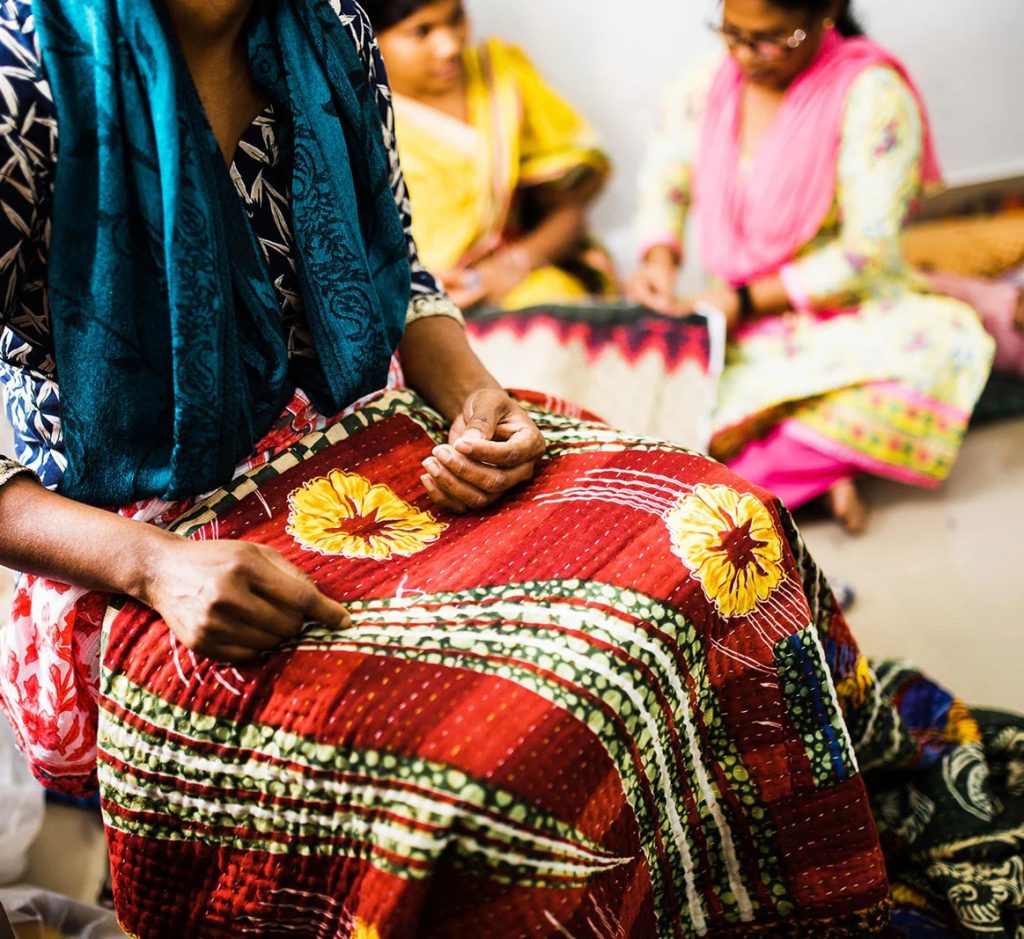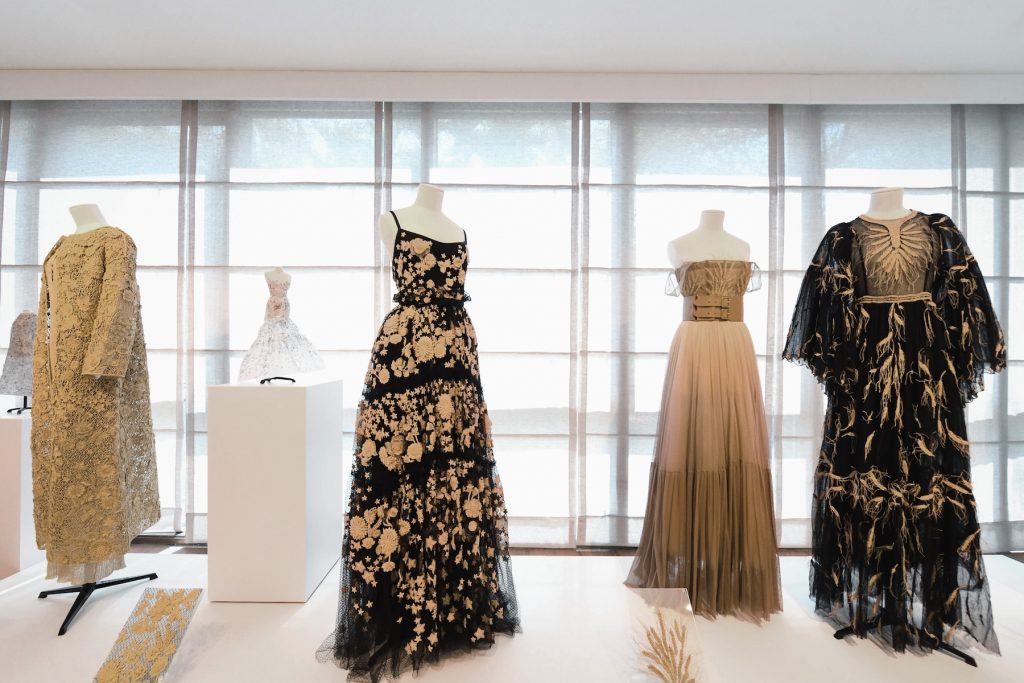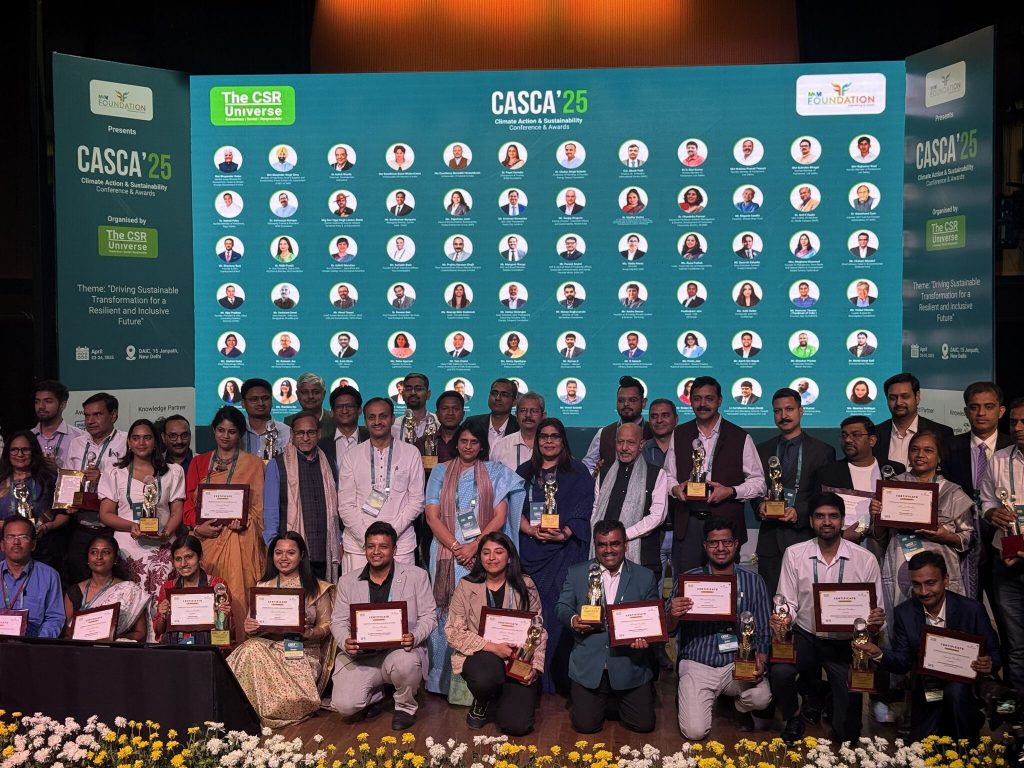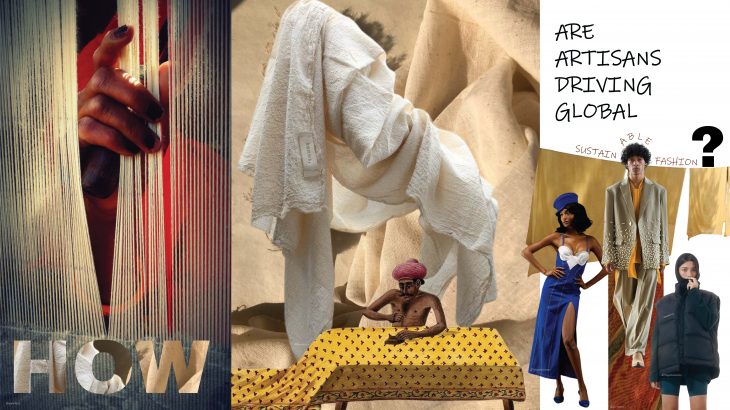Today, sustainable fashion is no longer just about organic cotton or recycled packaging. It’s about people. And increasingly, it’s about the skilled hands behind the craft — the artisans whose work holds both environmental wisdom and emotional value. In an era where fashion is redefined by climate urgency and consumer consciousness, one shift is clear: the world is turning back to traditional, time-honoured ways. At the heart of this shift are the local artisans — the weavers, dyers, printers, and embroiderers whose practices tell cultural stories and offer practical solutions to today’s sustainability challenges.
Here’s a closer look at how local artisans are shaping the future of ethical fashion. And more importantly, how you, as a design student, can learn and grow with them.
The True Pioneers of Sustainable Fashion
Long before “green fashion” took over the internet, artisans were dyeing fabrics with indigo and turmeric, weaving with organic cotton, and recycling leftover materials into new products. Artisans have always worked with natural materials and low-waste processes — often out of necessity, not fashion. For example, handloom weavers in India use no electricity while weaving. That’s not just energy-saving; it’s a carbon-neutral production method.

According to the Textile Ministry of India, over 43 lakh people are engaged in handloom activities, which contribute to 15% of cloth production in India. These time-tested practices by artisans are powerful solutions for the future of sustainable fashion. As fashion designers, looking back at these traditional, low-impact methods can inspire more responsible choices in design today.
The Legacy of Circular Design
According to the Global Fashion Agenda, today’s fashion industry generates around 92 million tonnes of textile waste annually,. That staggering number highlights the urgent need for circular solutions. The practices of artisan communities, rooted in reuse, repair, and renewal, offer real answers to this problem.

For instance, artisans in Bengal have been repurposing old saris into kantha quilts for generations, layering worn-out fabric and hand-stitching them into something warm, useful, and beautiful. The Banjara tribe, instead of discarding damaged fabrics, repairs and embellishes them with colorful embroidery, mirrors, beads, and even coins. What might seem like mending is, in fact, an art form — combining function and design in a way that modern fashion is only beginning to appreciate.
Shaping the Narrative, Not Just the Product
In the fast-paced world of global fashion, it’s easy to see artisans simply as “makers” or “labour behind the label.” But in truth, they are so much more. Artisans are storytellers. Every block they carve, every thread they weave, and every motif they design carries a lineage — a story passed down from one generation to the next. This kind of knowledge isn’t just technical; it’s emotional, cultural, and deeply human.
Today, mass production and synthetic repetition dominate; handmade pieces stand out like a breath of fresh air. Their uniqueness is not a flaw — it’s a feature. No two block prints from Bagru are ever the same. No two lines of kantha stitching will hold the same rhythm or tension. And that slight variation? That’s not imperfection. That’s the fingerprint of the maker. That’s what gives each piece authenticity.
For fashion design students, this is an invitation to think differently. Collaborating with artisans allows you to design with depth, creating garments that narrate stories, culture, and emotional value, while connecting with conscious audiences around the world.
The Hands That Keep Heritage Alive
Local artisans are the force preserving the soul of fashion. While global trends shift with every season, their hands continue to uphold timeless techniques — from handloom weaving and natural dyeing to block printing and delicate embroidery. In the villages of Jaipur, Kutch, and Assam, these skills are passed down like heirlooms, carrying stories woven into every thread. What keeps these crafts alive isn’t a museum showcase — it’s the everyday practice, the commitment to tradition, and the ability to adapt without losing their roots. In a world racing toward fast fashion, it’s the artisans’ steady rhythm that keeps these rich legacies alive.

For fashion students, understanding and engaging with these communities is more than inspiration — it’s a chance to co-create a future where fashion respects its past and values every hand behind the work.
From Local Lanes to Global Runways
Artisan-made fashion is no longer confined to local bazaars — it’s making waves in global markets. Today, brands across the world are turning to traditional crafts to meet the rising demand for authentic, sustainable fashion. Walk into Anthropologie in New York, and you might find a scarf block-printed in Jaipur. Look at Dior’s capsule collections, and you’ll spot delicate Chikankari embroidery from Lucknow. This isn’t a trend — it’s a shift in values. Conscious consumers want to know who made their clothes and how. They’re drawn to pieces with history, culture, and soul.

And India is already at the heart of this movement. In 2022–23, India’s handicrafts exports reached ₹30,039 crore (around $3.7 billion), with a large chunk coming from fashion accessories and textiles. That’s not just impressive — it’s a huge opportunity. If you’re studying fashion in Jaipur, you’re sitting in one of the most culturally rich design hubs of the world. The motifs of Sanganeri block printing, the color palettes of Bagru, the mirror work of Lambani artisans — these are assets global designers are seeking.
If fashion is a language, artisans are its ancient script—rich, diverse, rooted. As fashion design students, your job is not just to design something new, but to design something meaningful. And there’s no better place to start than with those who’ve been doing it right all along. By collaborating with local artisans, giving them credit, and involving them as co-creators, you can ensure that these crafts don’t fade into history books.
At ARCH College of Design & Business, we believe that sustainable fashion starts with education. That’s why our Fashion Design department actively nurtures sustainable practices — from hands-on engagement with artisans to technical approaches like zero-waste pattern making. Sustainability is not treated as a trend here, but as a design value. Our curriculum encourages students to innovate while remaining rooted in craft and responsibility. This dedication was recently recognized when ARCH received the Sustainable Fashion category winner at CASCA (Climate Action & Sustainability Conference & Awards), hosted by @M3M Foundation and TheCSRUniverse, a proud milestone that reflects our ongoing commitment to responsible design.

Join ARCH and become part of a community that values craft, culture, and conscious creativity.
